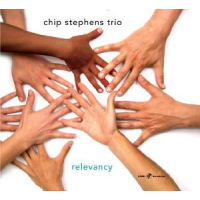Home » Jazz Articles » Live Review » Oddarrang/Girls In Airports at Belfast Festival 2013
Oddarrang/Girls In Airports at Belfast Festival 2013
Elmwood Hall
Belfast Festival
Belfast, N. Ireland
October 23, 2013
Over the course of fifty one years the Belfast Festival has programmed an ocean of outstanding music, from the guitar-spangled blues of Jimi Hendrix and the epic ragas of sitarist Ravi Shankar to the classical artistry of pianist Alfred Brendel. Jazz too has featured prominently over the years—from trumpeter Dizzy Gillespie to pianist Geri Allen—though less so in recent editionss.
Perhaps with the advent of Belfast's Brilliant Corners jazz festival it was felt that jazz now has its own home to go to. Or maybe jazz has simply changed its spots—which it's had a tendency to do over the years—and has slipped quietly in the BF's back door.
The concert of Oddarrang and Girls in Airports was billed as a jazz double header, which may have caused some of the older jazz heads in the Elmwood Hall to raise a quizzical eyebrow—after all, where were the trumpets, the standards, the walking bass lines, the blues? Regardless, the sheer originality of both groups clearly struck a chord with an appreciative audience.
Oddarrang doesn't call itself a jazz band at all, and in truth, its melting lyricism, ambient waves and cinematic breadth owed more to minimalism and new wave experimentalism. The concert promoted the band's third CD, In Cinema (Edition Records, 2013)—music composed initially for four independent films. Whilst the absence of the films' projection may have seemed like an obvious omission—particularly in a festival context—drummer Olavi Louhivuori's compositions contained enough emotional depth, verve and nuance to stand alone.
Dreamy soundscapes and throbbing Indie-rock blended with serene pastoralism and sci-fi hedonism—underpinned by Louhivuori's shifting rhythmic and percussive currents. The union of Osmo Ikonen's cello with Ilmari Pohjola's trombone created striking harmonics on the ethereal "Interusing." Throughout the show Ikonen alternated between long, plaintive notes, pizzicato precision and driving ostinatos, adding stirring wordless chant to the rocking "The Sage" and the genre-defying "Self Portrait." Pohjola mostly dealt in harmonic duties, occasionally asserting his voice, as on the plaintive intro to the folkloric, achingly pretty "Cultivate and Contemplate" and on the slow waltz section of "Missing Tapes from a Highway Set."
Guitarist Lasse Sakara and bassist Lasse Lindgren were constantly present in the mix and the use of loops, echo and reverb veered between wispy minimalism and storming intensity. The full range of Oddarrang's dynamics was felt on the episodic "Journey"; switching to piano, Louhivuori's damped-note riff was echoed by Pohjola on mini xylophone with guitar and cello adding layered depth to the group mantra. Gradually, the collective riff gave way to a cello-led lyrical passage, which in turn was subsumed by powerful psychedelic waves evocative of space rockers Hawkwind.
There were few solos during the set, as Oddarrang's music was primarily about textures and the power of the collective voice. In this sense, Oddarrang displayed something of guitarist Bill Frisell's orchestral approach to composition, particularly on the closing number "Self Portrait," which indulged in brooding reverie not a million miles away from Frisell's Blues Dream (Nonesuch, 2001).
Oddarrang's compelling invention questioned the wisdom of trying to hang a name on music that was as enjoyable as it was original.
Danish group Girls in Airports shared some stylistic ground with Oddarrang in that solos were largely eschewed in favor of a collective sound. Similarly, the music swayed between sparse lyricism bordering on the ethereal and all-enveloping walls of sound. What set GIA apart from Oddarrang and most other Scandinavian jazz/new wave bands were the African rhythms that colored its music. Percussionist Victor Dybbroe joined GIA after its eponymous 2010 debut and his chimes, shakers and congas have had a ripple effect in GIA's music, adding polyrhythmic depth in conjunction with drummer Mads, and helping the music groove with greater insistence.
The concert kicked off with "Transvestite"; saxophonists Martin Stender and Lars Greve's gentle, overlapping harmonics plotted the course over mallets that pulsed like a heartbeat and splashes of electronic keyboard from Mathias Holm. Almost imperceptibly the music swelled with rhythms driving like pistons towards an intense, bold finale. Yet even in the eye of the storm the music remained essentially melodic and somehow graceful.
Most of the compositions showcased GIA's third CD, Kaikoura (Gateway, 2013). With Holm doubling on bass duties, the deep grooves and tinkling keys of "The Grass by the Roses" evoked a funkier, pop version of The Doors. "Kaikoura" and "Sunshine on Fish Skin" combined dreamy, mellifluous saxophone melodies with percolating percussion and the compositions flowed into one another with suite-like fluidity.
Greater energy imbued "Broken Stones"; built around a fat back beat and catchy keyboard ostinato, the tune was utterly infectious, despite little motivic development. "Albert Khan" paid tribute to the philanthropic photographer, with Greve switching to clarinet and Dybbroe playing the congas with mallets on this lightly treading yet emotive number.
GIA's first visit to Ireland ended with the haunting "Migration," which began with susurrus saxophone and sparse, edgy keyboard. An angular departure began with the onset of an intense cymbal/percussion-driven train rhythm that was hypnotic and eerily convincing. As the rattling rhythm seared a path into the very psyche, saxophones sounded anguished groans and growls that flooded the Elmwood Hall in echoing waves. It was a blues in spirit, and a heady closing statement.
With luck, GIA will return in the future to do a more a comprehensive tour of Ireland. Its musical vision defies snug categorization, but there's no denying its powerful, intoxicating effect.
Tags
Live Reviews
Ian Patterson
United Kingdom
Belfast
Jimi Hendrix
Ravi Shankar
Dizzy Gillespie
Geri Allen
Olavi Louhivuori
Ilmari Pohjola
Bill Frisell
PREVIOUS / NEXT
Support All About Jazz
 All About Jazz has been a pillar of jazz since 1995, championing it as an art form and, more importantly, supporting the musicians who make it. Our enduring commitment has made "AAJ" one of the most culturally important websites of its kind, read by hundreds of thousands of fans, musicians and industry figures every month.
All About Jazz has been a pillar of jazz since 1995, championing it as an art form and, more importantly, supporting the musicians who make it. Our enduring commitment has made "AAJ" one of the most culturally important websites of its kind, read by hundreds of thousands of fans, musicians and industry figures every month.
























